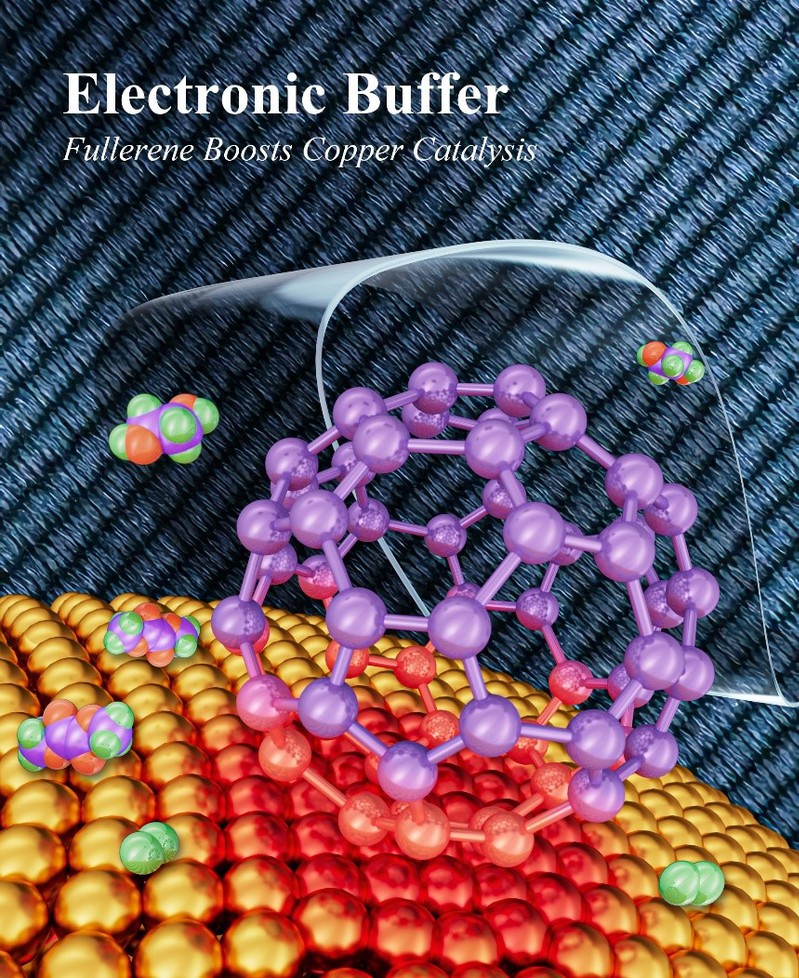[Science]Electronic Buffer Effect of Fullerenes: Modified Copper-based Catalyst Breaks through the "Stuck Point" of Ethylene Glycol Synthesis at Ambient Pressure
Prof. Su-Yuan Xie and Prof. Youzhu Yuan from our college, together with Prof. Yuan-Gen Yao and Prof. Guo-Cong Guo of Fujian Institute of Research on the Structure of Matter, Chinese Academy of Sciences, and engineers from Xiamen Funano New Materials Technology Co., Ltd., have made major breakthrough in ambient pressure synthesis of ethylene glycol from syngas, and moreover completed the scale-up trial of ethylene glycol production via dimethyl oxalate hydrogenation at near ambient pressure and below 200 °C. The results were published in Science (2022, 376, 288-292) with the title “Ambient-pressure synthesis of ethylene glycol catalyzed by C60-buffered Cu/SiO2”.
Ethylene glycol is used as an antifreeze and to make polymers. It is of strategic significance to develop an alternative route starting from syngas to ethylene glycol in China. This process uses a palladium catalyst to turn CO into dimethyl oxalate, which then reacts with hydrogen over a copper-silica catalyst to produce ethylene glycol. But this reaction requires expensive infrastructure to supply hydrogen at high pressure, and the extreme conditions lead to deactivation of the catalyst and formation of lots of unwanted by-products.
A fullerene-copper-silica catalyst (C60-Cu/SiO2) was developed in this work. Utilizing the reversible electron transfer between copper and fullerenes, the composition of cuprous in the catalyst is stabilized. The catalytic synthesis of ethylene glycol at ambient pressure from dimethyl oxalate was achieved, resolving the problems of side reactions and catalyst deactivation. This study also combines fullerenes as electron buffers with transition metal catalysis for the first time, which opens up new opportunities for fullerene catalysis.
The research was supported by the National Natural Science Foundation of China (21721001, 92061000, 92061204, 21972113, 22171235, 21827801, 21972120, and 21703100), and the National Key Research and Development Program of China (2017YFA0206801, 2017YFA0206802, and 2017YFB0307301).
Link:https://www.science.org/doi/10.1126/science.abm9257






